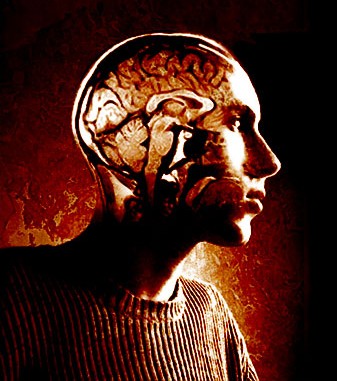|
Positive And Negative Affect Schedule
The Positive and Negative Affect Schedule (PANAS) is a self-report questionnaire that consists of two 10-item scales to measure both positive and negative affect. Each item is rated on a 5-point scale of 1 ''(not at all)'' to 5 ''(very much)''. The measure has been used mainly as a research tool in group studies, but can be utilized within clinical and non-clinical populations as well. Shortened, elongated, and children's versions of the PANAS have been developed, taking approximately 5–10 minutes to complete. Clinical and non-clinical studies have found the PANAS to be a reliable and valid instrument in the assessment of positive and negative affect. Development and history The PANAS was developed in 1988 by researchers from the University of Minnesota and Southern Methodist University. Previous mood measures have shown correlations of variable strength between positive and negative affect, and these same measures have questionable reliability and validity. Watson, Clark, and ... [...More Info...] [...Related Items...] OR: [Wikipedia] [Google] [Baidu] |
Positive Affectivity
Positive affectivity (PA) is a human characteristic that describes how much people experience positive affects (sensations, emotions, sentiments); and as a consequence how they interact with others and with their surroundings. People with high positive affectivity are typically enthusiastic, energetic, confident, active, and alert. Research has linked positive affectivity with an increase in longevity, better sleep, and a decrease in stress hormones. People with a high positive affectivity have healthier coping styles, more positive self-qualities, and are more goal oriented. Positive affectivity also promotes an open-minded attitude, sociability, and helpfulness. Those having low levels of positive affectivity (and high levels of ''negative'' affectivity) are characterized by sadness, lethargy, distress, and un-pleasurable engagement (see negative affectivity). Low levels of positive affect are correlated with social anxiety and depression, due to decreased levels of dopamine. ... [...More Info...] [...Related Items...] OR: [Wikipedia] [Google] [Baidu] |
Negative Affectivity
Negative affectivity (NA), or negative affect, is a personality variable that involves the experience of negative emotions and poor self-concept. Negative affectivity subsumes a variety of negative emotions, including anger, contempt, disgust, guilt, fear, and nervousness. Low negative affectivity is characterized by frequent states of calmness and serenity, along with states of confidence, activeness, and great enthusiasm. Individuals differ in negative emotional reactivity.Tellegen, A. (1985). Structures of mood and personality and their relevance to assessing anxiety, with an emphasis on self-report. In A. H. Tuma & J. D. Maser (Eds.), Anxiety and the Anxiety disorders, (pp. 681-706), Hilssdale, NJ: Erlbaum. Trait negative affectivity roughly corresponds to the dominant personality factor of anxiety/neuroticism that is found within the Big Five personality traits as emotional stability. The Big Five are characterized as openness, conscientiousness, extraversion, agreeableness, a ... [...More Info...] [...Related Items...] OR: [Wikipedia] [Google] [Baidu] |
Factor Analysis
Factor analysis is a statistical method used to describe variability among observed, correlated variables in terms of a potentially lower number of unobserved variables called factors. For example, it is possible that variations in six observed variables mainly reflect the variations in two unobserved (underlying) variables. Factor analysis searches for such joint variations in response to unobserved latent variables. The observed variables are modelled as linear combinations of the potential factors plus "error" terms, hence factor analysis can be thought of as a special case of errors-in-variables models. Simply put, the factor loading of a variable quantifies the extent to which the variable is related to a given factor. A common rationale behind factor analytic methods is that the information gained about the interdependencies between observed variables can be used later to reduce the set of variables in a dataset. Factor analysis is commonly used in psychometrics, persona ... [...More Info...] [...Related Items...] OR: [Wikipedia] [Google] [Baidu] |
Personality
Personality is the characteristic sets of behaviors, cognitions, and emotional patterns that are formed from biological and environmental factors, and which change over time. While there is no generally agreed-upon definition of personality, most theories focus on motivation and psychological interactions with the environment one is surrounded by. Trait-based personality theories, such as those defined by Raymond Cattell, define personality as traits that predict an individual's behavior. On the other hand, more behaviorally-based approaches define personality through learning and habits. Nevertheless, most theories view personality as relatively stable. The study of the psychology of personality, called personality psychology, attempts to explain the tendencies that underlie differences in behavior. Psychologists have taken many different approaches to the study of personality, including biological, cognitive, learning, and trait-based theories, as well as psychodynamic, and hum ... [...More Info...] [...Related Items...] OR: [Wikipedia] [Google] [Baidu] |
Emotion
Emotions are mental states brought on by neurophysiological changes, variously associated with thoughts, feelings, behavioral responses, and a degree of pleasure or displeasure. There is currently no scientific consensus on a definition. Emotions are often intertwined with mood, temperament, personality, disposition, or creativity. Research on emotion has increased over the past two decades with many fields contributing including psychology, medicine, history, sociology of emotions, and computer science. The numerous theories that attempt to explain the origin, function and other aspects of emotions have fostered more intense research on this topic. Current areas of research in the concept of emotion include the development of materials that stimulate and elicit emotion. In addition, PET scans and fMRI scans help study the affective picture processes in the brain. From a mechanistic perspective, emotions can be defined as "a positive or negative experience that is as ... [...More Info...] [...Related Items...] OR: [Wikipedia] [Google] [Baidu] |
Suffering
Suffering, or pain in a broad sense, may be an experience of unpleasantness or aversion, possibly associated with the perception of harm or threat of harm in an individual. Suffering is the basic element that makes up the negative valence of affective phenomena. The opposite of suffering is pleasure or happiness. Suffering is often categorized as physical or mental. It may come in all degrees of intensity, from mild to intolerable. Factors of duration and frequency of occurrence usually compound that of intensity. Attitudes toward suffering may vary widely, in the sufferer or other people, according to how much it is regarded as avoidable or unavoidable, useful or useless, deserved or undeserved. Suffering occurs in the lives of sentient beings in numerous manners, often dramatically. As a result, many fields of human activity are concerned with some aspects of suffering. These aspects may include the nature of suffering, its processes, its origin and causes, its meaning and s ... [...More Info...] [...Related Items...] OR: [Wikipedia] [Google] [Baidu] |

